Masts to be axed from explosive-filled shipwreck in safety bid
- Published
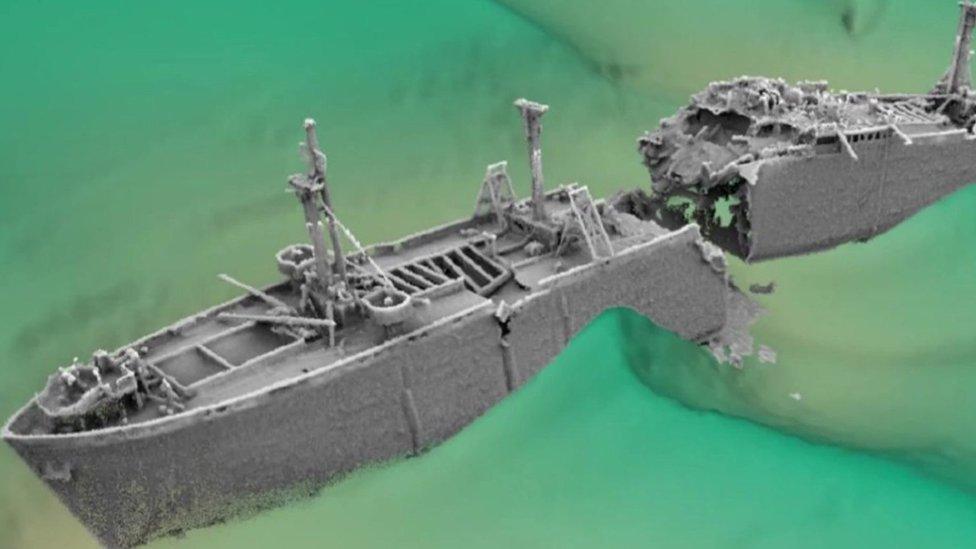
The wrecked SS Richard Montgomery holds 1,400 tonnes of explosives
Hidden below the Thames is one of London's most unlikely tourist destinations.
We've travelled about 30 minutes, along with a handful of day trippers from Southend, into the Thames Estuary.
Slowly, a set of masts sticking out from the grey waves come into view. This is the SS Richard Montgomery, beached on a sandbank in 1944.
The problem is that the wreck holds 1,400 tonnes of explosives - which could detonate.
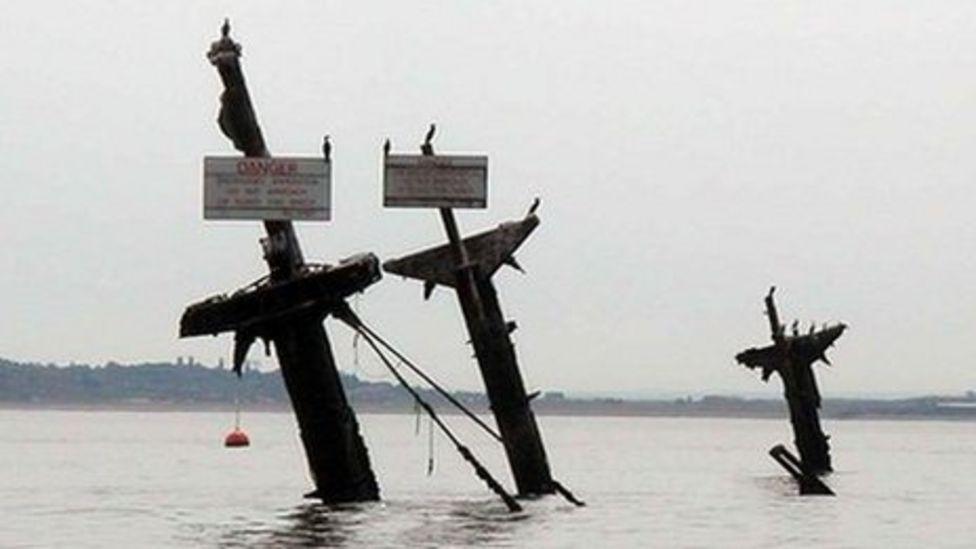
The masts of the SS Richard Montgomery can be seen above the water line and from the shore
The ship is decaying and if the cargo explodes, a huge tidal wave could blast towards the Kent and Essex shorelines and onwards towards the capital.
Richard Bain is from Jetstream Tours, which is seeing an increased interest in trips to see the masts of the SS Richard Montgomery.
"We get a lot of people interested in the Montgomery purely because it's a relic of the world wars," he said. "This year is the last year we are going to be able see those masts."
The wreck is monitored and there is an exclusion zone around it but it is not far from the main shipping lanes into the capital.
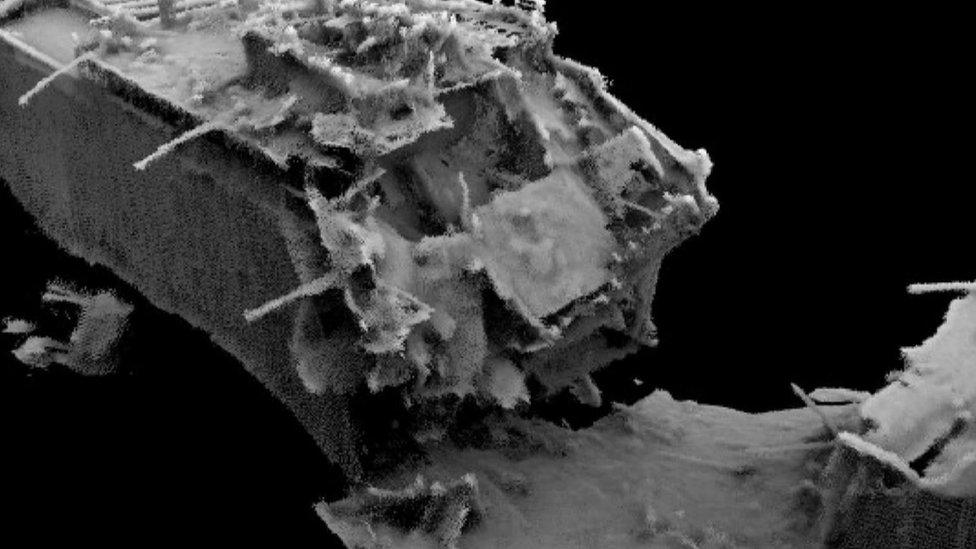
The shipwreck is decaying
It is also not far from the site of the proposed Thames Estuary Airport, which was lauded by the then-mayor and now prime minister Boris Johnson.
The Department for Transport wants to trim the masts as it is feared they could fall on to the boat below and cause a detonation. Businesses have been told the masts will go in June.
Mr Bain said he understood why it was necessary because the "wind and waves eventually collapse" everything in the rover, but it was "a shame to see them go".
"To avoid a potentially catastrophic explosion, if it ever did come to that, I think taking the masts off is one of the best things the government has done this year," he added.
Professor David Alexander, from University College London, is an expert in risk and disaster reduction and has studied the SS Richard Montgomery in detail.
"Here you have got the remains of a ship broken into two," he said. "A top event is all of that goes up and there's an almighty blast... and a huge column of water and debris and stuff.
"And we still have analogues of that from around the world where that has happened in the past so it's not a totally unforeseen event. "
The risk to nearby infrastructure could be on the scale of "a minor tsunami" in the worst case scenario, he said.
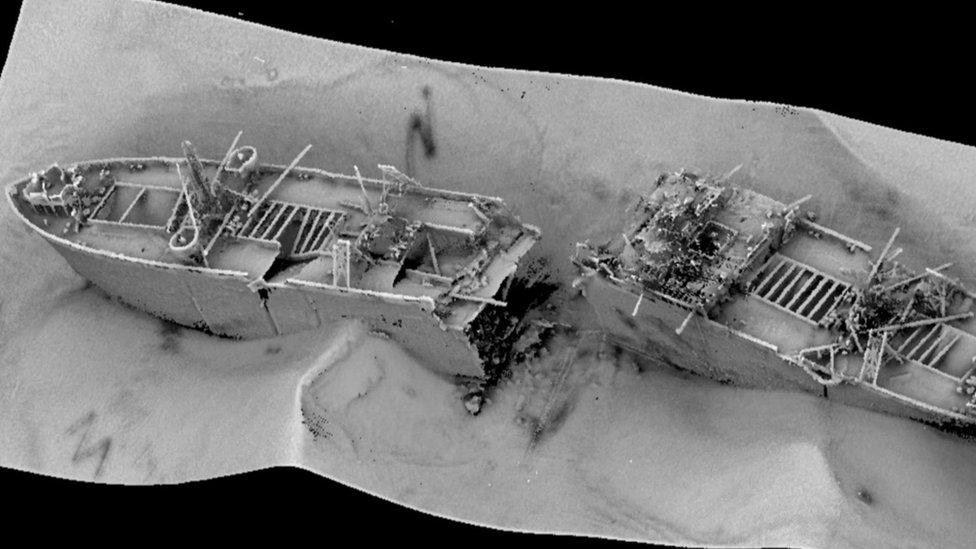
If the cargo explodes, there could be a minor tsunami, according to one expert in risk management
A Department for Transport spokesperson said monitoring suggested the wreck was in a "relatively stable condition" and expert surveys were under way on reducing the height of the masts.
But Professor Alexander thinks it is time the authorities removed the explosives, although he admitted the work would not be cheap, not least because "there's only one company in the world that could do that" and would "probably need robots".
He said: "You'd certainly need enormous care because the structure of the ship is disintegrating at an accelerated rate.
"I think over the last 77 years the government has thought to itself 'well, the longer we leave it, the safer it gets'.
"It appears if you talk to experts in explosives, that is the opposite of the truth."

Follow BBC London on Facebook, external, Twitter , externaland Instagram, external. Send your story ideas to hellobbclondon@bbc.co.uk, external
Related topics
- Published1 February 2020

- Published22 January 2020
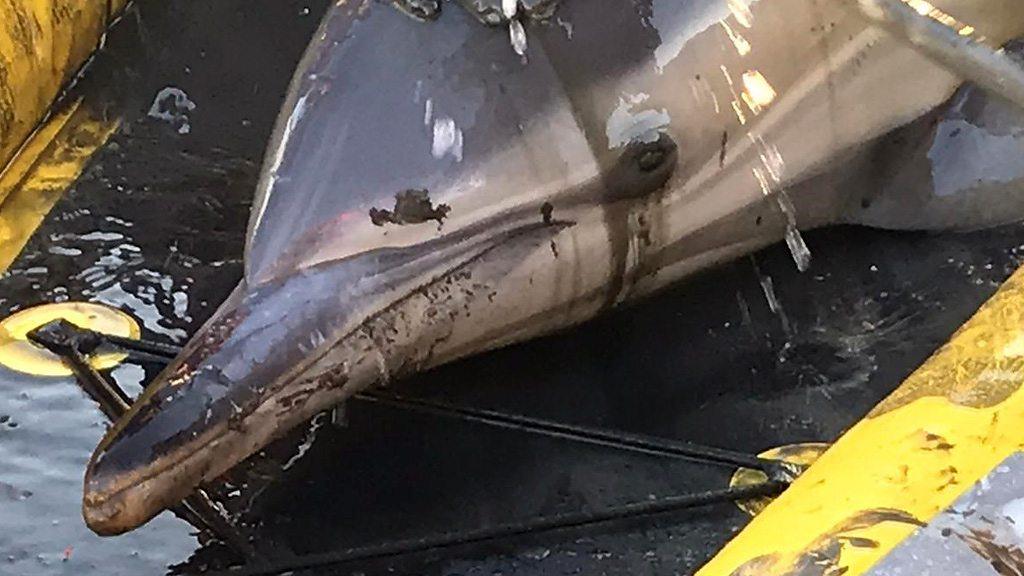
- Published30 October 2017
